Seolleneun Majung (설레는마중)
9.5Km 2021-03-30
49, Insadong-gil, Jongno-gu, Seoul
+82-2-6954-2915
It is a store that sells both traditional Korean desserts and coffee. This cafe is located in Jongno-gu, Seoul. The most famous menu is rice cake.
Gyodae Galbijip Sejong Center for the Performing Arts(교대갈비집 세종문화회관)
9.5Km 2020-11-20
5-3 Saemunan-ro 5-gil Jongno-gu Seoul
+82-2-730-6882
A great place for group dinners and gatherings. This BBQ restaurant is located in Jongno-gu, Seoul. The representative menu is grilled spareribs.
Temple Jogyesa de Séoul (조계사(서울))
9.5Km 2021-12-22
55, Ujeongguk-ro, Jongno-gu, Seoul-si
+82-2-768-8500
Le temple Jogyesa est un
temple bouddhiste zen en Corée qui a la particularité d’être situé en
plein centre-ville de Séoul. Jogyesa se situe dans une rue perpendiculaire aux rues illuminées de Jongno, et à la rue menant à la station Anguk,
non loin de la rue d'Insadong.
La première chose que l'on remarque
en entrant dans le temple, ce sont les arbres qui font face au bâtiment principal âgés de plus de 500 ans. Un de ces
arbres mesure 26 mètres de haut et procure en été un ombrage apaisant.
Le temple a servi dès 1910 de résidence principale pour le moine Han Yong-un. Le bâtiment principal
érigé en 1938 est majestueux, décoré de nombreuses couleurs. A l’intérieur se trouve une statue du bouddha Sakyamuni. A l’extérieur,
en face, se trouve une pagode de sept étages contenant des reliques de bouddha.
Le temple Jogyesa ne possède pas cette atmosphère solennelle que l’on peut
retrouver dans les temples situés en montagne qui offrent par exemple une
vue panoramique sur la montagne ou sur la mer. Mais, situé en ville, il est facile d’accès et convient aux visiteurs à l’emploi du temps serré. A proximité du temple se trouvent des petites boutiques spécialisées dans la
vente d'articles bouddhistes
(chapelets, écrits, encens, etc) mais également des souvenirs tels que des poupées et des porte-clés. Les personnes intéressées par le bouddhisme y trouveront certainement
leur bonheur.
Omokjip Sejong Center for the Performing Arts(오목집 세종문화회관)
9.5Km 2020-11-20
5-7 Saemunan-ro 5-gil Jongno-gu Seoul
+82-2-722-6882
It is a good store for office worker's group dinners. This restaurant's signature menu is braised pigs' feet. This Korean dishes restaurant is located in Jongno-gu, Seoul.
Palais Changgyeonggung (창경궁)
9.5Km 2025-03-07
185, Changgyeonggung-ro, Jongno-gu, Seoul-si
+82-2-762-4868
Situé au centre de Séoul, le palais Changgyeonggung a été construit en tant que palais Suganggung par le 4ème roi de la dynastie Joseon, le roi Sejong (r.1418-1450), en faveur de son père retiré du pouvoir, le roi Taejong. Le palais a souvent servi de lieu de résidence pour les reines et les concubines. Durant le règne du roi Seongjong (1469-1494), le palais fut rénové et renommé en palais Changgyeonggung. Le palais a ensuite accueilli un zoo et un parc botanique durant la période de l'impérialisme japonais. Le site est resté tel quel jusqu'en 1983 avant que des travaux de rénovation furent entrepris pour restaurer l'aspect noble et originel du palais.
Aneuk Hotel & Spa – Jongno Unni (아늑호텔 앤 스파 종로운니점)
9.5Km 2025-05-07
89, Donhwamun-ro 11ga-gil, Jongno-gu, Seoul
L'Histoire du Roi Sejong (세종이야기)
9.5Km 2022-09-13
175, Sejong-daero, Jongno-gu, Seoul-si
+82-2-399-1000
Le Roi Sejong était le quatrième de la dynastie Joseon (1397-1450, régnant de 1418-1450). Il a été responsable de certaines des réalisations les plus brillantes de l'histoire de Corée, comme la création du Hangeul (alphabet coréen) ainsi que de grands progrès dans les domaines de la science, la culture, l'art et la politique. Le passage derrière la statue du Roi Sejong de Gwanghwamun mène à une exposition sur son histoire, où l’ont peut voir certaines des contributions les plus étonnantes du roi pour le développement de la Corée.
La salle d'exposition du roi Sejong se compose en 9 sections sur une superficie totale de 3.200 ㎡. Parmi les thèmes exposés, on trouve l’invention du Hangeul, les contributions scientifiques, artistiques, militaires et politiques (y compris la théorie de la Minbon, qui est reconnue comme la base de la politique).
Informations générales
Pour la commodité et de divertissement des visiteurs, le musée dispose également d'une salle d'exposition spéciale avec des activités multimédia, des livres, une boutique de souvenirs et un salon.
Nwijo(뉘조)
9.5Km 2024-12-11
27, Insadong 14-gil, Jongno-gu, Seoul
+82-2-730-9311
Nwijo (뉘조) is a Korean restaurant specializing in wild vegetable cuisine. The name ‘Nwijo’ means ‘the god of the silkworm,’ and likens wild vegetables to silkworms in that both can be eaten in their entirety. The restaurant serves original full-course Korean meals that are prepared using hundreds of kinds of wild vegetables, including special seasonal vegetables.
A typical full-course meal starts with delicious pumpkin porridge, followed by seasoned wild vegetables, root vegetable ssam (condiments wrapped in vegetable leaves), slices of boiled meat, and steamed lotus leaf-wrapped rice served with jjigae (Korean stew) and various side dishes. This kind of traditional feast is pleasing to both the eye and the palate and is topped off with sikhye (traditional sweet rice drink). Lunch specials are also available.
Moonguesthouse [Korea Quality] / 문게스트하우스 [한국관광 품질인증]
9.5Km 2020-09-09
31-18, Samil-daero 32-gil, Jongno-gu, Seoul
+82-2-745-8008, +82-10-8704-9981
The Moon Guesthouse is situated near a number of interesting tourist destinations including Unhyeongung Palace (3min on foot), Bukchon Hanok Village (5min on foot), Changdeokgung Palace (5min on foot), and Changgyeonggung Palace (10min on foot). The guesthouse was named ‘moon’ (‘door’ in English) because it has many 176 doors and windows. Upon entering by the gate, visitors will see a ‘ㄷ’-shaped hanok building in the courtyard, in which a wooden bedstead and a table are placed. On the opposite of the hanok building there is a wall roofed with tiles engraved with Korean patterns such as deer, pine, turtle, etc. Flowers in the flowerbed lined up along the wall are in bloom and the bonsai are also well-kept in the house. Renovated and opened as a guesthouse in September 2011, Moon Guesthouse consists of a bonchae (main building) and a byeolchae (detached house). The rooms are decorated with red clay and hanji (traditional Korean paper handmade from mulberry trees), and have under-the-floor heating (ondol). Each room is equipped with an air-conditioner, and has a 40cm-thick layer of red clay over the ceiling for insulation, making the rooms cool in summer and warm in winter. The house has seven individual guestrooms and five modern bathrooms, but the entire building (bonchae or byeolchae) can be rented, too. In particular, the unhyeondang of the bonchae is very popular as it can be converted into one large space for special events, group workshops, etc. simply by opening all the sliding doors (Bunhapmun – Goryeo construction style). This room, which is decorated with a flower-patterned windscreen, a landscape painting, and calligraphy, has been used as a shooting location for various TV programs including KBS2’s TV reality program Man’s Qualification and its variety show The Human Condition. The guestrooms are also equipped with traditional furniture including a cabinet inlaid with mother-of-pearl. The guesthouse also provides a variety of experience programs from 11am to 3pm, including tea ceremony, wearing Hanbok (traditional Korean clothes), making kimchi and gochujang (red chili paste), playing a traditional musical instrument, making a rubbing of a stone inscription, calligraphy, drawing orchids on a fan, and so on. The house has about seventy hanbok and other clothing accessories, as well as a royal costume. Its calligraphy and drawing orchid programs are run directly by the owner, who used to work as a classical Chinese teacher at a high school.
Bukchon-ri Dullegol (북촌리둘레골)
9.5Km 2021-03-19
44 Insadong 14-gil Jongno-gu Seoul
+82-2-747-9700
A restaurant with Korean traditional house-themed interior design. The representative menu is Korean table d''hote. This is a Korean cuisine located in Insa-dong, Seoul.
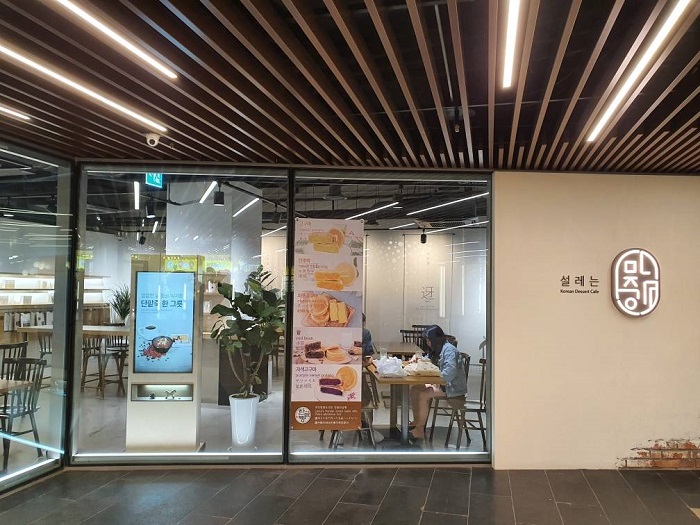
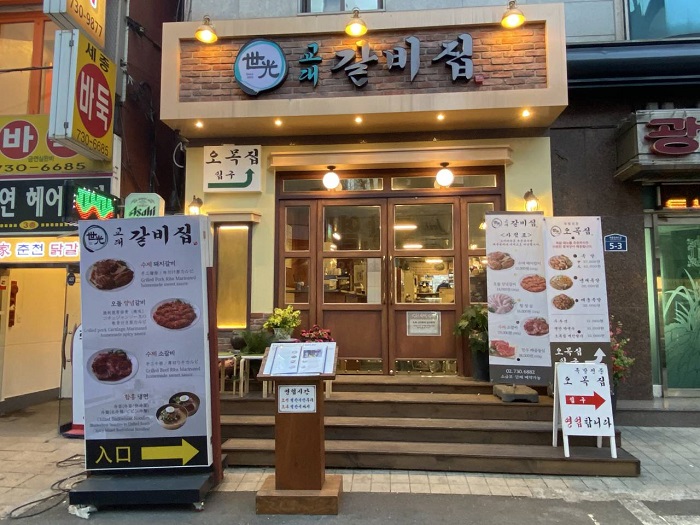
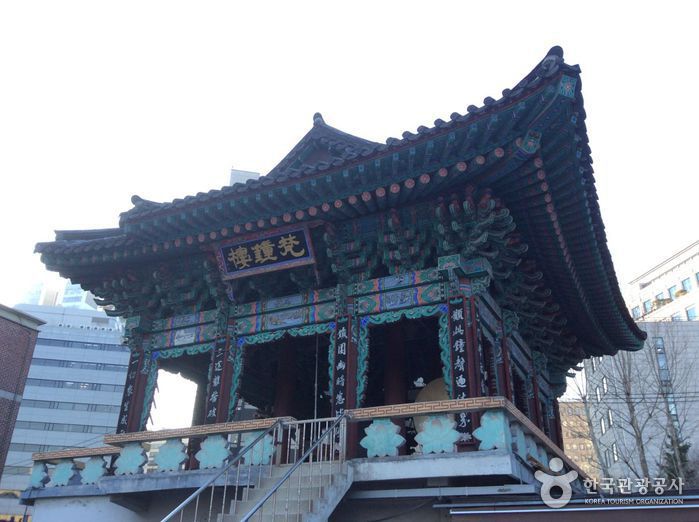
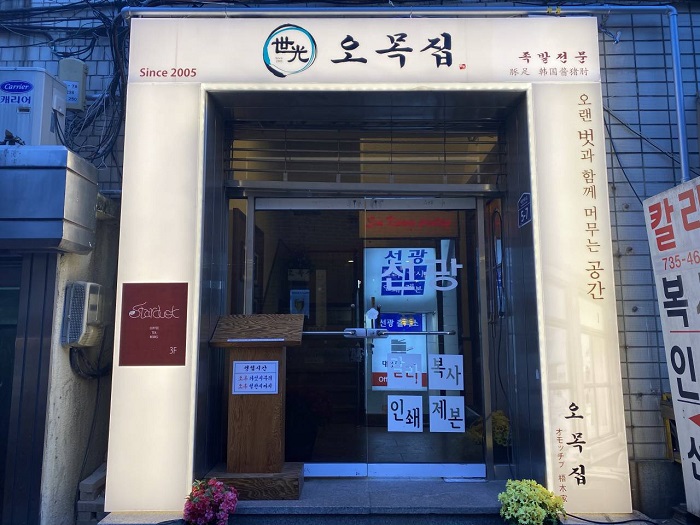
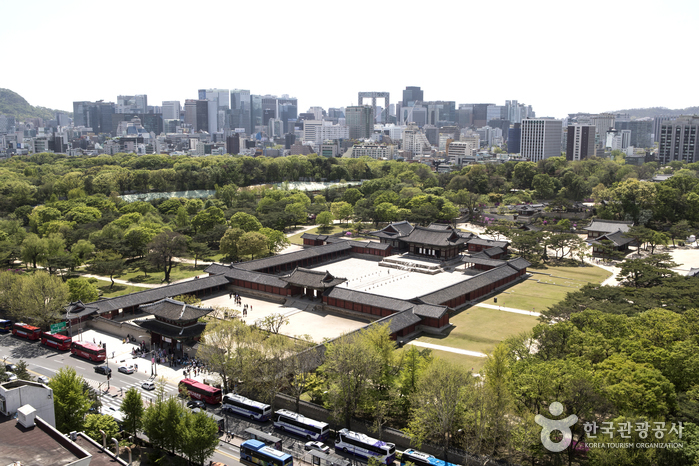
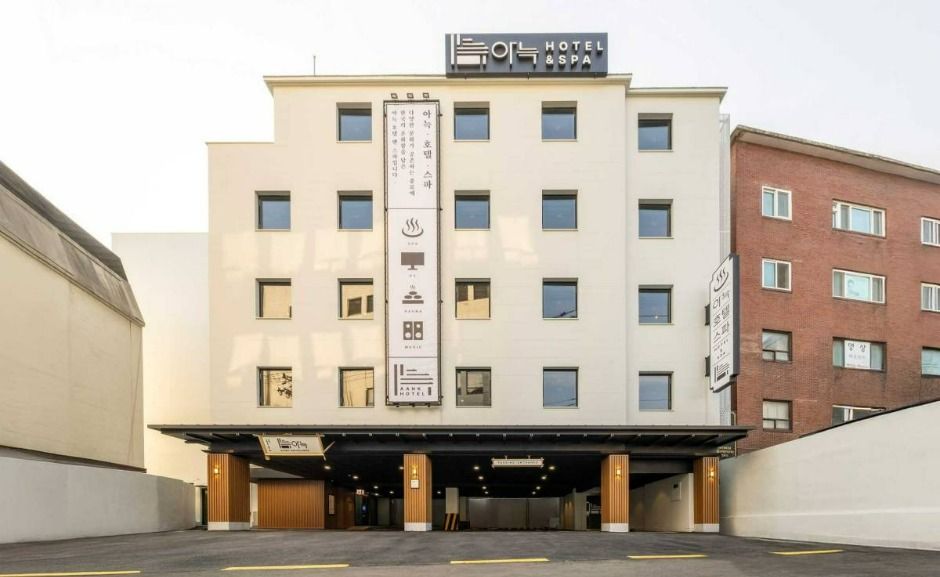
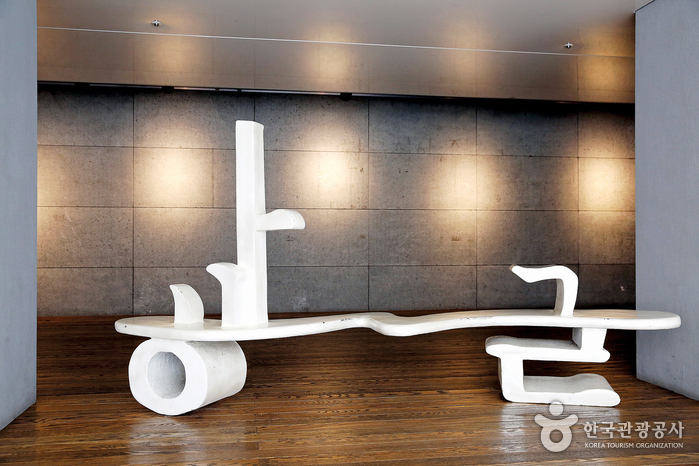

![Moonguesthouse [Korea Quality] / 문게스트하우스 [한국관광 품질인증]](http://tong.visitkorea.or.kr/cms/resource/09/2577509_image2_1.jpg)
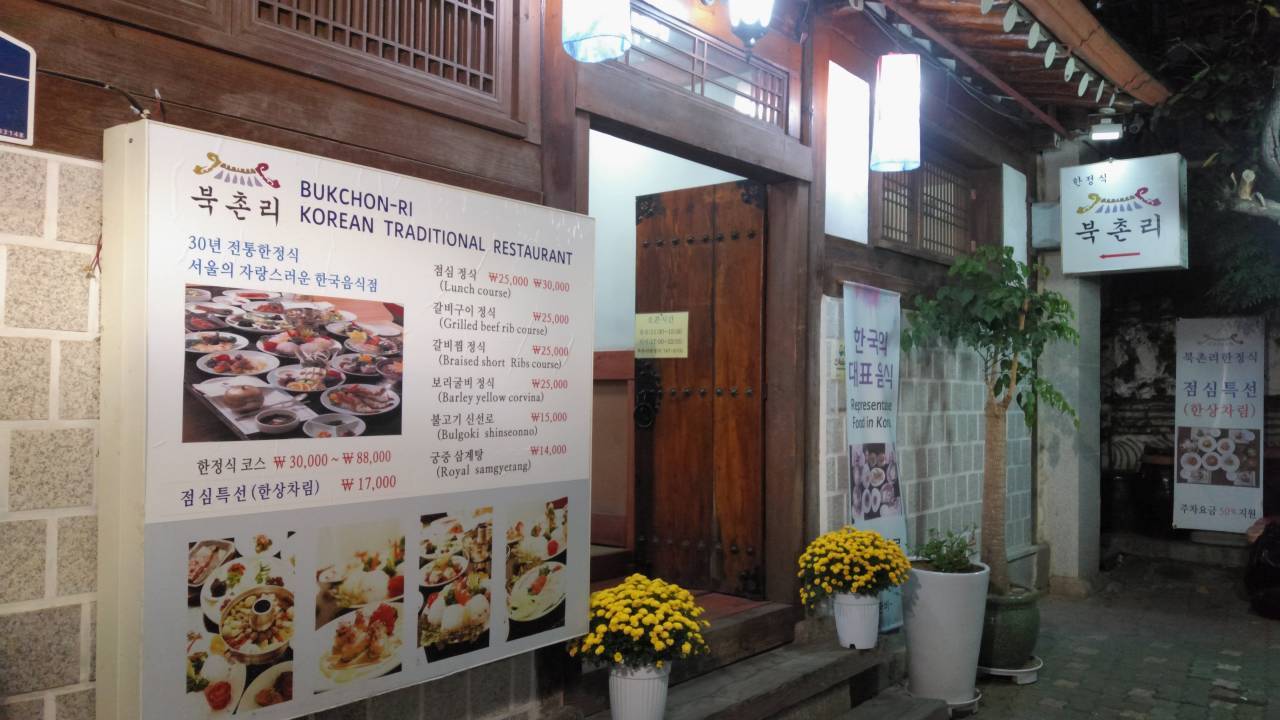
 Français
Français
 한국어
한국어 English
English 日本語
日本語 中文(简体)
中文(简体) Deutsch
Deutsch Español
Español Русский
Русский